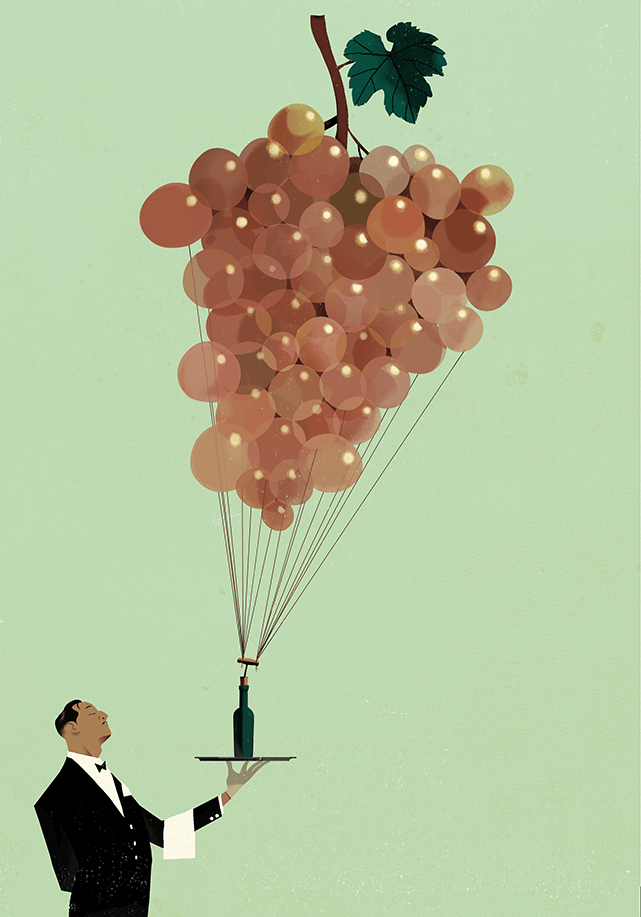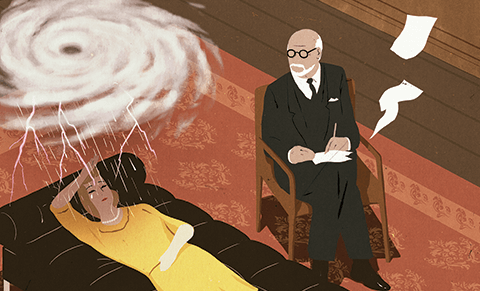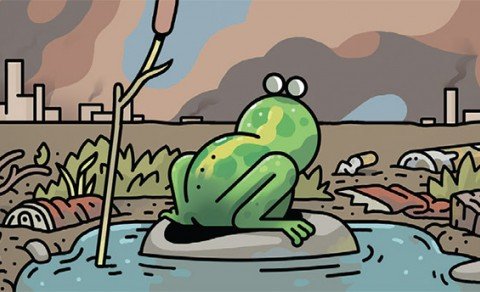Sustainable, local, organic – when it comes to food and drink, these monikers sell. The explosion of farmers markets, local food movements and the organic retail sector in North America constitute an onward and upward trend.
Wine and beer are no exception. Both appeal to consumer appetites for local and authentic. In Canada, craft beer, made on a small scale and with natural local ingredients, is the fastest growing segment of the beer market and, as Canada’s relatively young wine industry extends its regional reach, a small but growing number of wineries are challenging themselves to produce organically.
Because the results taste good, it’s less a matter of twisting consumers’ arms to make responsible choices than simply giving them what they want. As Heather MacGregor, a spokeswoman for the Liquor Control Board of Ontario, put it, “We respond to what our customers like and this market just continues to grow across the board, on both imports and domestic.” She’s referring to a fourfold increase in organic beer sales and a doubling in organic wine sales in the last four years.
Organic doesn’t capture the full breadth of sustainability which, in the realm of wine and beer, also encompasses energy efficiency in production and reduction in water use, packaging and transport. And while it may feel like a contemporary sensibility, it’s nothing new.
When two Bavarian dukes decreed on April 23, 1516, that the only allowable ingredients in beer were barley, hops and water, they were not really concerned about taste. The so-called Bavarian Purity Law, which gets flaunted on beer labels to this day, was in fact designed to stop brewers from pillaging local wheat and rye crops, a practice that was leading to bread shortages and even starvation, and to reduce illness from additives (whether this was more about consumer safety or protectionism from north German beers that featured weird and wonderful psychoactive herbs remains a matter of debate).
The decree also regulated prices (no more than a penny per litre) and defined the beer-making season (April 23 to September 29) in order to cut back on fires caused by brewing and spoilage for lack of cool storage in the summer months. Although no mention is made of yeast – integral to beer – it’s clear the ingredient was understood as earlier medieval documents regulate yeast-sharing protocols between brewers and bakers.
Efficient brewing
Today, the scant resource in beer-making is water and the energetic challenges are to heat efficiently, recapture heat loss and optimize water purification and bottle-cleaning. Elmira, Ontario-based environmental consulting firm Enviro-Stewards has specialized in beer and wine production. By reducing water and gas consumption, product losses and the use of caustics, wineries and breweries increase their output and minimize their loads on local water treatment facilities. Realizing this, and that reducing industrial water consumption is cheaper than digging more wells, several Canadian municipalities and public utilities have, in the last few years, begun to co-fund environmental assessments and refits.
The City of Guelph and Union Gas, for instance, helped Canadian brewer Sleemans to reduce its water and natural gas consumption by 8 per cent and 20 per cent respectively, boosting the brewery’s output and its bottom line by $330,000 a year, with an annual return on investment of over 100 per cent.
In Europe, Dutch beer giant Heineken has paired with the Austrian government in a “Green Brewery” project whose ultimate objective is carbon-neutral beer. Their pilot project at 500-year-old Göss brewery in southeastern Austria uses a combination of solar thermal systems and residual heat from a nearby sawmill for brewing. Almost all of the brewery’s waste heat is used to warm the municipal water supply and in the winter, outdoor air is used for cooling. External electricity used at the brewery, like all breweries in Austria’s Brau Union group (the country’s biggest beer conglomerate), is renewable.
Such ambitions may be more realizable and at a larger scale in a European context – where, for example, Austria is aiming for energy self-sufficiency by 2050 thanks to its extensive wind and hydropower. But Canadian breweries are making strides as well. One major shift here is towards local production.
When Steve Abrams, co-founder of Mill Street Brewery, decided to launch Ontario’s first organic beer in 2002, he had to import his organic hops from New Zealand and his organic malt from Germany, a painful contradiction for a local craft brewer. In the absence of a Canadian standard, he also had to turn to the U.S. Department of Agriculture for organic certification.
Twelve years later, Mill Street’s organic ale (one of the brewery’s more than 40 beers) accounts for 60 per cent of the company’s sales. The brewery is now one of over 30 craft breweries in Ontario and Abrams is able to source all his ingredients within the province.
Hops on the ups
The boom in craft breweries has, among other things, brought hops back to Ontario following a dry spell that Ontario Hop Growers’ Association vice-president Hugh Brown believes dates back to prohibition. Founded four years ago, his association now comprises roughly 30 commercial hops growers, up from “next to none” five years ago.
Most are producing organically and on a small scale but Brown believes that, given the high local demand, bigger commercial players are soon to enter the market. He sees Ontario’s beer industry undergoing what the province’s wine industry went through a decade ago – a move towards estate production, with ingredients being grown and processed on site, a situation where sustainable practice takes on greater immediacy.
Crannóg Ales, founded in 2000 in British Columbia’s interior, is one such on-farm brewery and the first in Canada to get organic certification. Crannóg brews 1.5 million litres annually: “minuscule” in the words of its co-founder Rebecca Kneen (craft brewery is anything below 40 million litres). For Kneen, who grew up on a farm, it “only made sense” to farm and brew on site. Crannóg grows its own organic hops, propagates its own yeasts, draws its own spring water and has its Prairie barley malted by a local maltster. All spent grains and waste water are used on the farm.
Having found no solar or wind systems practical for its scale of operation, Crannóg’s solution has been to keep its energy needs low by eliminating two of the most energy-intensive processes in beer-making: thermal pasteurization and bottling.
“Why spend so much attention on the ingredients if we’re just going to filter out the goodness and flavour?” asks Kneen. Being non-pasteurized, the beer can’t be sold through the liquor board, but Crannóg has a cult following locally and nobody complains that the beer is only available in kegs or “growlers” (which get cleaned and reused rather than recycled) or that it has to be stored cold because it’s “alive.”
Breaking tradition
Crannóg harbours no dreams of expansion beyond the B.C. border: “One important piece of sustainability is being content at a place of sufficiency,” says Kneen. “Constant growth isn’t necessarily sustainable. When things go industrial, they also become invisible.”
Bill Redelmeier, owner of Southbrook Vineyards in Niagara-on-the-Lake, Ontario, is something of a kindred spirit in the world of wine. Southbrook boasts biodynamic, organic and Leadership in Energy and Environmental Design (LEED) certifications – making it unique in Canada.
Biodynamic takes organic farming to another level. Redelmeier, a third-generation farmer, dispenses with fungicides and pesticides, raises sheep for their manure and cultivates wild yeasts and moulds “right out of the sheep’s rear end.” He considers the difference between conventional and organic farming to be one of degree, whereas biodynamic farming is more one of kind. By tolerating low levels of infection in the vineyard, the grapes cultivate thick skins rich in tannins and bio-flavonoids and by using wild yeasts, fermentation takes longer and occurs in unique succession. “It’s the difference between a note and a chord,” he says referring to the taste, adding that Ontario’s two biodynamic wineries take home more than their share of national awards every year.
Redelmeier would like to see far more organic vineyards in Ontario, but understands that risk and expense are real obstacles for most grape growers. Organic vineyards typically yield less than half that of conventional ones and they’re more vulnerable to blights and weather irregularities. When taking the leap to organic, growers often look for advance purchasing commitments from wineries to protect themselves financially.
Nor is it universally agreed that organic is better. J-L Groux, winemaker at Stratus Vineyards, just down the road from Southbrook in Niagara-on-the-Lake, argues that organic doesn’t always correlate with quality or sustainability. Originally from the French Loire with wine-making experience on both continents, Groux talks about the downsides of organic production. Grapes need to be sprayed more often, he says, and that requires more fuel. There’s also the need to occasionally pick grapes prematurely to avoid disease, and in the past, organic sprays such as copper and sulphur have taken a toll on soils.
While not organic, Stratus believes deeply in sustainability, which Groux calls “the overall picture.” The winery, built in 2005, was the first building in Canada and the first winery in the world to get LEED certification – a distinction that applies to both its construction and ongoing operation. Groux talks about a “gentle on the earth” approach – which, along with no use of herbicides, includes largely natural pesticides, compost fertilizers, electro-magnetic sprayers rather than irrigation, bio-fuelled tractors and labour-intensive production that uses gravity rather than pumps. Because the parcels adjacent to Stratus are less than 30 feet away and farmed conventionally, the vineyard is not eligible for organic certification. But even if it were, Groux wouldn’t subject his wines to that corset. For him, the young, experimental culture of winemaking in Canada is what makes it more exciting than in the tradition-bound old world.
Taste trumps
For many winemakers like Groux, the term “sustainable” implies virtues rather than restrictions. California’s Sonoma County is embracing it whole hog, aiming to become America’s first 100 per cent sustainable wine region by 2019. Wine has a long tradition in Sonoma, its vineyards dating back to the 1820s and many still in family hands; it’s also big business, accounting for 60 per cent of the county’s GDP and one in three jobs.
According to Karissa Kruse, president of the Sonoma County Winegrowers, the body behind the sustainability initiative, it seems a logical step to make sure winemaking is sustainable. “The marketplace is going this way,” says Kruse. And she’s right. In its 2014 Culinary Forecast, the U.S. National Restaurant Association cited sustainability as the top trend in food and beverage for the coming decade.
While the initiative is completely voluntary, Kruse says that all of Sonoma’s 1,800 grape growers and almost half its 450 winemakers have opted in. And it’s not just a marketing ploy – the region’s susceptibility to drought makes optimal canopy management, drip irrigation and frost protection vital to survival.
Sustainable breweries and wineries, while growing, still represent a small slice of the total market, a position that seems to foster a healthy mix of solidarity and fierce competition. To expand their market share, they have to work together; to distinguish themselves within the small pack, they have to be creative. This leads to wonderful spinoffs – like the glass jewelry made from Stratus’ bottle shards or the blankets woven from Southbrook’s sheep clip – and community collaborations like Mill Street’s partnership with Earth Day Canada, or eastern Ontario craft brewer Beau’s hiring of homeless youth to drive its delivery vans.
But ultimately, it’s taste buds that drive the market. As Mill Street’s Abrams says, “Our research shows that flavour is the single biggest factor for consumers. The fact that it’s organic is nice but for the vast majority it’s not the number one reason to buy.







